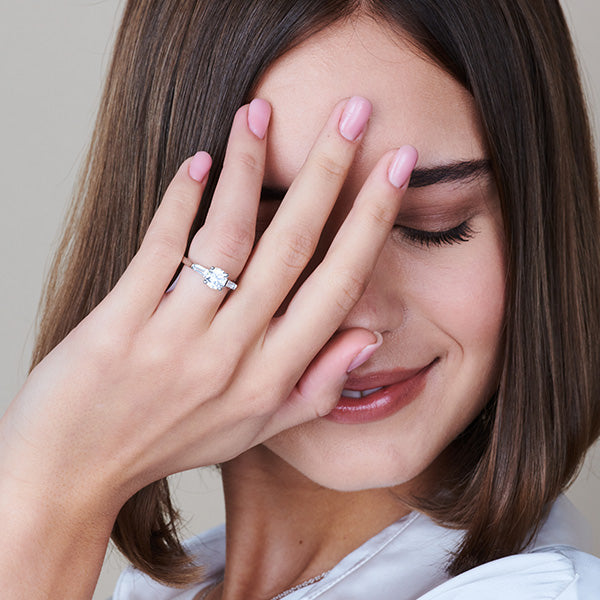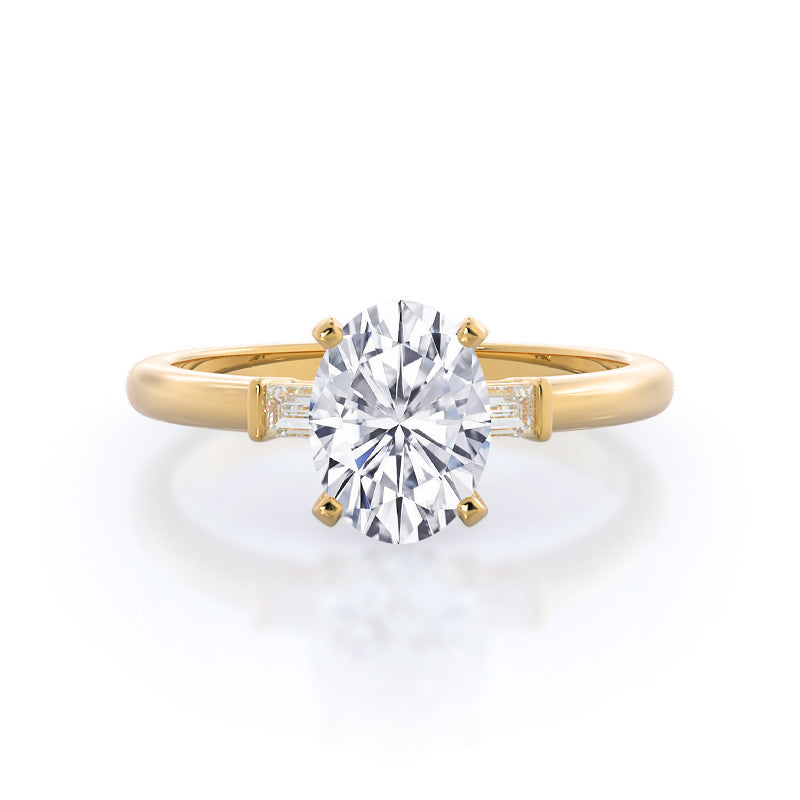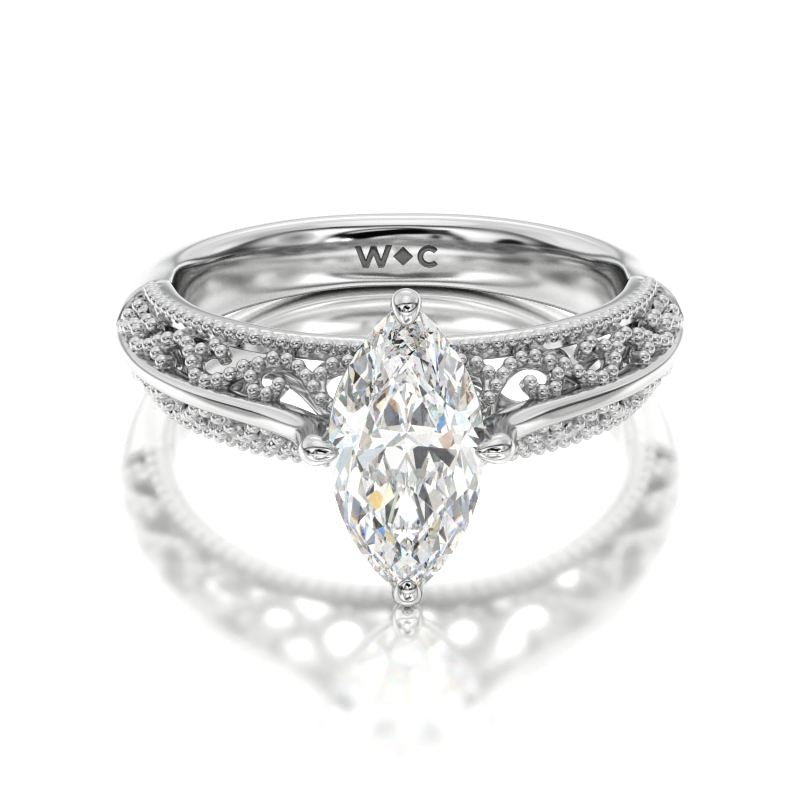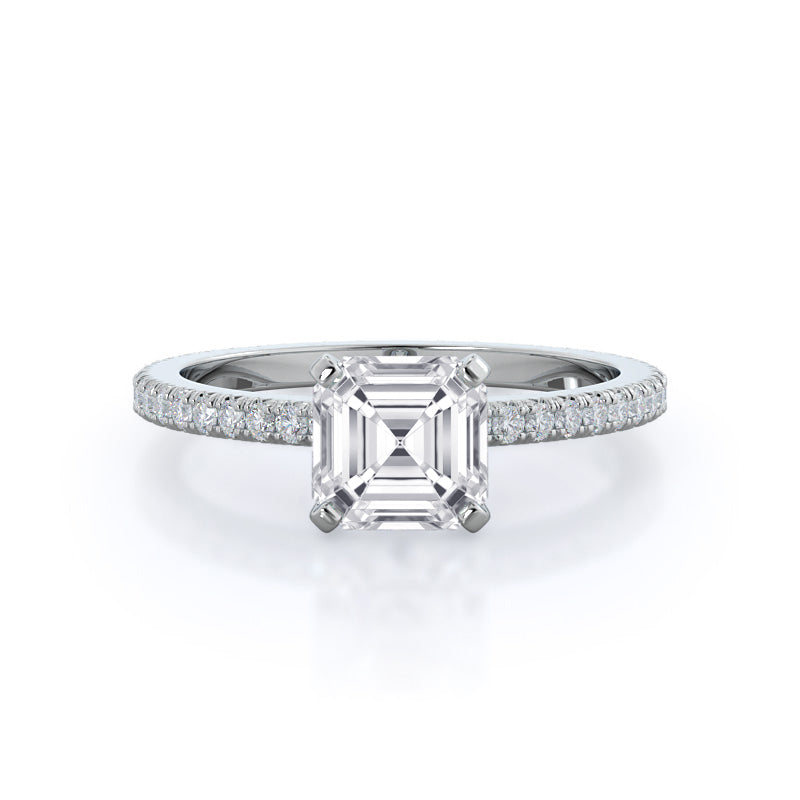
Engagement Ring Trends from the 1950s
Share
The 1950s era, also called the Golden Age of Capitalism, featured economic prosperity because the U.S. was coming out of World War II. The scarcity and gloom of the 1940s gave way for lower taxes and greater purchasing power in the 1950s. Things were looking up, and that was also reflected in the style and jewelry of this decade. World War II brought unique textiles to the fashion world, such as nylon, polyester, and acrylic.
Jewelry Moments of the 1950s
After World War II, the U.S. emerged from the trauma of the war and the scarcity imposed on products, such as metals for jewelry. By the 1950s, metals, such as platinum, were available after being scarce during the war. As a result, more engagement rings in the 1950s used platinum and white gold. These metals continue to be popular for engagement rings today because diamonds generally have better reflection in white metals rather than yellow gold. In addition to access to metal, consumers had more access to diamonds so more engagement rings in the 1950s feature these sparkling gemstones.
Another telltale characteristic of 1950s engagement rings are the style details. You’ll commonly see braid details on the setting. The braid details can look like a braid, rope, or woven metal. Because of more access to diamonds, engagement rings of this era featured larger center stones. A popular style featured a larger center diamond with accent diamonds on either side. These could be symmetrical smaller diamonds on either side of the center stone or baguettes. This look is still popular today! For center stones, popular cuts included round, emerald, marquise and Asscher.
Stylistic elements found in engagement rings from the 1950s include engravings or braid details in the setting. They also featured progressively larger stones. One of the most popular styles representative of the 50s were engagement rings featuring a large center diamond nestled among symmetrical smaller diamonds or baguettes, on either side of it. Popular cuts included round cuts, Asscher cuts, emerald Cuts and marquise Cuts. The diamond’s cut is what gives it the ability to reflect light.
1950s Style Engagement Rings
If you or your loved one appreciates the look of vintage engagement rings, check out our favorite rings that give a 1950’s vibe.
Cushion Halo Braided Pave Diamond Engagement Ring
This 1950s, vintage-style setting features a unique twisting diamond braid that rises up the band to your center cushion-cut halo diamond. Pick your choice of metal (platinum or 14K or 18K yellow, white, or rose gold) and the size of your center stone (0.5 to 1.2 carats).
Three Stone Baguette Diamond Engagement Ring
This classic, three-stone diamond setting has 01.2 carats of accenting baguette side stones. The baguette details add a vintage vibe to this setting. Select your favorite metal (platinum or 14K or 18K yellow, white, or rose gold) and a center stone between 0.25 and 10 carats. If you’d rather not have an oval center stone, select a different cut (round, radiant, princess, cushion, marquise, emerald, Asscher, or pear).
Vintage Filigree Engagement Ring
This ring gives a 1950’s look with a modern twist. Modern and romantic aesthetics combine in this vintage-style beaded-filigree engagement ring. The cathedral shank draws the eye to the beautiful kite-set center stone. Select round, cushion or marquise for the center stone in 0.5 to 5 carats. You can also select your choice of metal (platinum or 14K or 18K yellow, white, or rose gold).
Petite French Set Diamond Engagement Ring
A graceful engagement ring design is set with French set diamond accents for an artful finish. Select 0.25 to 10 carats for your center stone. If you would like a different center stone other than Asscher, select round, radiant, princess, cushion, marquise, emerald, oval, or pear. French-set diamonds are small diamonds raised with tiny prongs around the ring band that create the look of a single, continuous line of sparkle.
Wrapping Up
The 1950s was an unforgettable era of economic prosperity and a post-war boom that inspired fine jewelry trends that are popular today. Vintage-inspired engagement rings continue to be sought after because they feature special details, provide a unique setting option, and look timeless. As you browse for engagement rings, consider a modern 1950’s engagement ring for the vintage lover in your life.
FAQs
What makes an engagement ring vintage?
You’ll see both vintage rings and vintage-style rings. Truly vintage rings are antique rings that have lasted for decades. Vintage-style engagement rings is a modern-made ring created in the style of a vintage era or using vintage-style details and characteristics.
What style was Grace Kelly’s engagement ring?
Grace Kelly’s famous engagement ring is a 10.48-carat Cartier ring, and it’s one of the priciest pieces of celebrity jewelry in history. The incredible ring cost $4,060,000 in 1956. The spectacular engagement ring features an emerald-cut diamond flanked by two baguette-cut side stones that’s set in platinum. Three stone rings like Grace’s symbolize the past, present and future of the relationship.
What is a baguette diamond?
Baguette diamonds are long rectangular stones, but they can also be square or tapered. This type of diamond is called a step cut because it’s long and tapered rather than faceted like round diamonds.
Which is better for an engagement ring – white gold or platinum?
This decision depends on preferences, skin sensitivities, and budget. Platinum continues to be a popular choice for engagement rings because it’s rare, elegant, and durable. It’s also a hypoallergenic option. White gold offers a similar white, silver look but is also strong but is more budget friendly.



